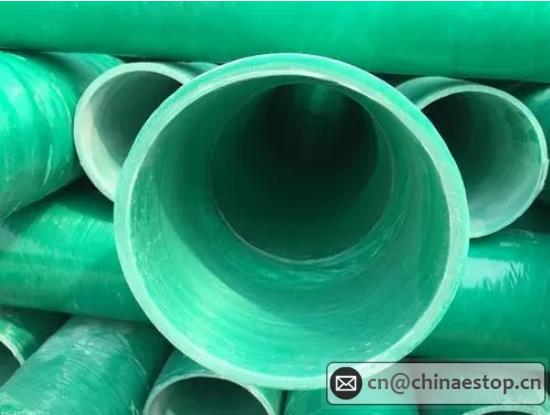GRP (Glassfiber Reinforced Plastic) pipe, also known as FRP (Fiberglass Reinforced Plastic) pipe, is widely used in various industries such as water supply, sewage, oil and gas, and chemical transportation due to its high strength, corrosion resistance, and long service life.
GRP Pipe Manufacture Filament Winding Process
Manufacture Step-by-step Process:
-
Mandrel Preparation:
- A rotating steel mandrel (or mold) is coated with a release agent and sometimes a gel coat for a smooth inner surface finish.
- The mandrel determines the internal diameter and shape of the pipe.
-
Fiber Impregnation:
- Fiberglass rovings are pulled through a resin bath or resin impregnation system where they are fully wetted out with the liquid resin mixture.
-
Winding Operation:
- The impregnated fibers are wound helically around the rotating mandrel using a computer-controlled winding head.
- The winding angle (typically between 55° and 80°) can be adjusted to optimize hoop and axial strength based on design requirements.
-
Curing:
- After winding is complete, the pipe is allowed to cure. Curing can be done at room temperature or accelerated using heat (oven or infrared lamps).
- The curing time depends on the resin formulation and ambient conditions.
-
Demolding:
- Once cured, the pipe is stripped from the mandrel.
- If a sand-core process is used, the core is removed after curing.
-
Finishing:
- Cutting to length
- Surface finishing
- Quality inspection (e.g., thickness, pressure test, visual inspection)
Quality Control Parameters
- Fiber tension during winding
- Resin content and viscosity
- Winding angle accuracy
- Curing temperature and time
- Dimensional tolerances
- Hydrostatic pressure testing
Sustainability Notes
-
Energy: 50–70% lower than steel pipe production.
-
Recyclability: Limited (thermoset resin) → focus on landfill reduction via grinding for filler.

